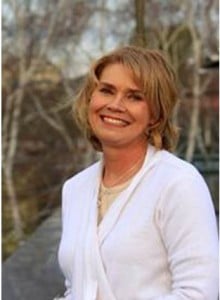Carole, 62 Retired nurse, manager & active mother who sustained four bone fractures & is concerned about further fracture, CANBERRA
 Since June 2015, retired nurse, government manager and active mother-to-two, Carole, 62, Canberra, has sustained four fractures and is concerned about a future riddled with ongoing broken bones.
Since June 2015, retired nurse, government manager and active mother-to-two, Carole, 62, Canberra, has sustained four fractures and is concerned about a future riddled with ongoing broken bones.
Carole endured her first fracture in June last year, when she tripped over a step and broke her arm and leg. She was subsequently immobilised for three months in two plaster casts, unable to drive, or to even use crutches to move around.
Following the removal of her plaster casts, Carole commenced a physiotherapy-driven walking program to regain the use of her left foot. However, after pushing her leg too hard and fast on this exercise rehabilitation program, Carole developed a stress fracture in her left foot, from which she took eight weeks to recover.
In April 2016, while walking along the beach near her holiday home, Carole stubbed her toe on a rock and it broke on impact.
Despite having no known family history of osteoporosis, and having led an active lifestyle, and followed a healthy diet, Carole’s bone density is in the osteopenic (pre-cursor to osteoporosis) range.
This is her story.
“I had never been concerned about my bone health,” Carole said.
“I was always active, followed a good diet, and I have no family history of osteoporosis. So it just wasn’t on my radar.”
Carole spent the majority of her professional career working as an intensive care nurse, and the final 10 years of her career as a Project Manager for the Department of Health and Ageing and the Department of Education, Canberra. She was subsequently aware of the importance of monitoring and maintaining good bone health. After electing to undergo her first bone density scan in her late 40’s, Carole was informed that her bone density was normal, so no longer gave it a second thought.
Since then, Carole has undergone four bone density tests, and on all occasions, was informed her bone health was within the normal range.
After tripping over a step however, which led to Carole breaking her arm and leg in June 2015, she decided to have another bone density scan, for which she was once again, advised her bone density was normal.
Concerned by the findings, Carole requested a copy of the report and discovered that her femur, wrist and lumbar spine were on the borderline on the bone density threshold of concern.
“The report revealed that my femur and wrist were osteopenic, while my spine showed lower than normal bone density,” said Carole.
Feeling concerned for her welfare, Carole visited her GP armed with the report, and was placed on a medication that reduces the risk of osteoporotic fracture by slowing the rate of bone deterioration.
“After experiencing four fractures in less than a year, I want to do all that I can to avoid this trend continuing.
“I’m really worried about breaking my back now,” Carole said.
In addition to her medication, Carole performs physiotherapy-oriented bone-building exercises, floor exercises and undergoes physiotherapy on her foot. She has also commenced “a conservative walking routine,” but remains cautious about exerting herself too much in order to avoid further fracture.
Nowadays, Carole’s major concern is sustaining another fracture. In fact, she is so anxious about re-fracture, that she has sought help from a psychologist, and reached out to a physiotherapist who specialises in treating patients living with osteoporosis.
“I visit a good psychologist because I’m very concerned about my risk of fracture. I have also booked an appointment with a physiotherapist who specialises in treating osteoporosis, and I’m looking for tailored exercise programs in which I can participate to help reduce my risk of further fracture,” said Carole.
“My fractures have really impacted my life. I’m now afraid to go on walks along the beach, and when I do anything strenuous, I’m concerned about what it could do to my bones. I therefore spend a lot of time at home alone, scared of putting a foot out of place in the event that I break another bone.”
Carole urges members of the community to “know their bone health.” She recommends the use of a new, innovative, Australian, online fracture risk self-assessment tool – a joint initiative by the Garvan Institute of Medical Research and Osteoporosis Australia.
“For anyone who deems themselves at risk of osteoporosis, I would recommend the use of this new online fracture risk self-assessment tool, because it could help to prevent a fracture, and minimise your risk of bone injury,” Carole said.
“If only I had known a year or two earlier about my risk of fracture, I may have been able to have prevented my four fractures, and to have placed myself in a much better position moving forward.
“It’s important to act now, rather than waiting until you fall, or experience a fracture,” said Carole.
“Go online and use the new fracture risk self-assessment tool, because prevention is much better than cure.”
www.knowyourbones.org.au
